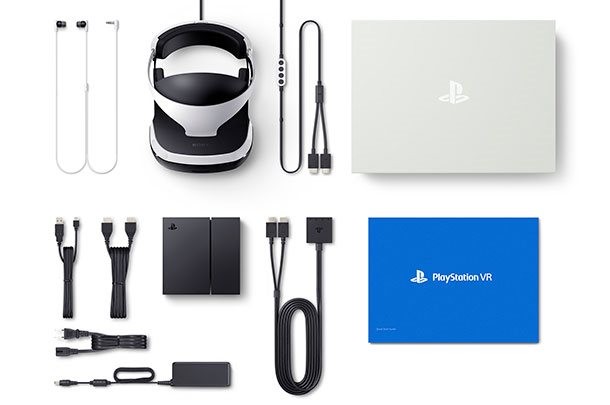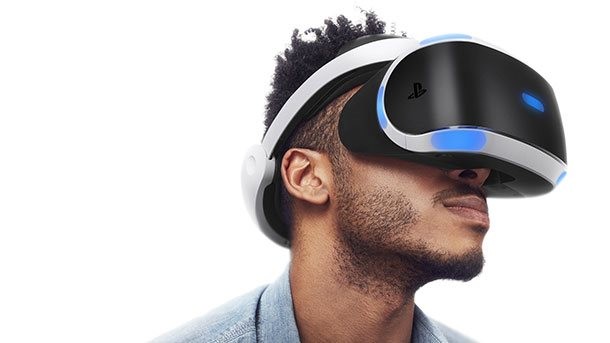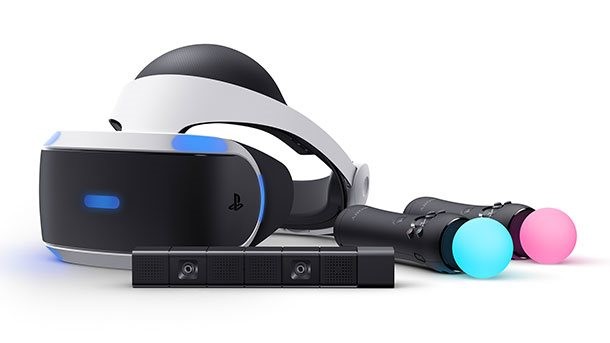Please support Game Informer. Print magazine subscriptions are less than $2 per issue
The PlayStation VR Review

The Oculus Rift and HTC Vive have enjoyed a healthy seven-month lead in the virtual-reality race due to both launching within a week of one another. Sony stayed out of the early fight as it finished preparations for its home-console VR experience, but now it’s ready to step into the ring. It has a handful of exclusive titles and a cheaper (but still expensive) headset that might be more appealing to those still making a decision about whether to dive into this new medium of entertainment. In addition to its lower price point, Sony’s PlayStation VR has the potential to reach further than its competitors thanks to the PlayStation 4’s install base. While it does have some catching up to do to its competition, Sony’s headset does provide a legitimate virtual-reality experience with plenty of pros to balance the cons.
The first question many have about PlayStation VR is how it stacks up to the Oculus Rift and HTC Vive, and the quick answer is as expected: PlayStation VR is not as great as its main competitors. If you want to go all-in on virtual reality, money is no object, and you have an extra room in your house, then HTC Vive is the one I would personally recommend. That person is rare, however, and they probably bought a Vive back in April. The PlayStation 4 may lack in some areas such as screen resolution and controller-tracking, but this is modern virtual reality as we’ve come to define it. The headset offers a genuine sense of presence in its worlds and offers experiences unlike anything you’ve ever played before in the console space.

The Setup
One of the biggest advantages of the PlayStation VR is its connection to the PlayStation 4. It does not plug into a PC, which means Sony has only had to account for one type of system. The headset comes included with all the cables you need, as well as a separate processing unit that looks a little like an adorable miniature PlayStation 4. The processing unit does require its own power, so you will have to make some room on your surge protector.
The headset and the PlayStation 4 console connect to the processing unit, and the processing unit plugs into your TV. The PlayStation camera stays plugged into the proprietary port on the back of the console. Once that’s all set up, it’s a matter of adjusting the camera so that it can see the headset, and you’re ready. The initial setup process was reasonable, taking about 10 minutes at most, and I took the headset between home and our offices while working on the review encountering few issues when having to unplug and plug it back in.
• PlayStation VR Headset
• PlayStation 4 Camera
• Two PlayStation Move controllers
• PlayStation Worlds game
• PlayStation VR Demo Disc
• PlayStation VR Demo Disc
Two PlayStation Move controllers - $99.99
The Comfortability
PlayStation VR looks bulky and is made of mostly plastic, but it is the most comfortable to wear of the three main VR headsets. You pull the front and back of the headset apart to place it over your head as you would a hat; once you have it in place, a knob on the back lets you tighten the headset in small increments. The back of the headset also has a button to release the tension when you’re ready to take it off.
The PlayStation VR keeps up with Oculus and Vive’s refresh rates, but the screen is lower resolution. It still looks sharp and is capable of delivering some impressive detail, but there is no denying that games look muddier on VR. This is true of all virtual reality – the games looks sharper on-screen than they do in-headset – but the gap between the visuals is larger in PlayStation VR.
The visor, which houses the screen, can be moved toward and away from your face. Unlike the competition, the PlayStation VR does not entirely rest on your face, which is a good and bad thing. The good thing is since the visor is not pressed against your face, you can comfortably wear glasses. On the competing headsets, I had to resort to not wearing my glasses while playing VR, even though it does make my vision significantly worse. Here, glasses are no problem.

The gap between your face and the visor also means your peripheral vision is not 100% obscured. You don’t get a full view, but if you want to take notice of your surroundings or check your phone, you just press the button to pull the visor away from your face, and push it back when you’re ready to start playing again. A passthrough camera still would have been appreciated, but this a good low-tech solution for making sure you’re at least somewhat aware of your surroundings.
The downside of the gap, however, has the potential to be a much larger problem. Light leaking into the headset can break the immersion, especially when a game requires you to pull a brightly lit Move controller up to your face. I also became nauseated by PlayStation VR often as the leaking light would sometimes reflect on the lenses inside the headset. Playing in a dark room alleviates this problem, but it does not solve it.
A standard 1/8-inch headphone jack is embedded near a set of buttons that hangs by your chest while wearing VR, so wearing headphones is easy. The buttons turns PlayStation VR on and off, control volume, and mute voice chat.

The Controllers
Many games use the standard DualShock 4 controller, and most cleverly superimpose the controller into the virtual space in front of you. The better way to play most of the games though, is with two PlayStation Move motion controllers. These controllers are comfortable, and seeing your two separate hands in a virtual space lends a much better sense that you’re actually there.
The PlayStation VR headset accounts for full 360-degree rotation by embedding sensors in the back, but the same can’t be said for the controllers. The PlayStation Camera needs to see the light from your controller in order for it to function, so if you are facing away from the camera and your body blocks the camera’s view to the controller, it can create a problem.
The Operating System
If you’ve used the PlayStation 4, then you already know what you’re doing to when it comes to navigating the PlayStation 4 in virtual reality. It basically displays the exact same U.I. on a large screen in front of you. There’s no need to sign up for a separate PlayStation VR account, or sit in a fake room to look through your games.
Your normal, non-VR games can be played on this screen, but I wouldn’t recommend it. It basically takes your PlayStation 4 games, makes them look muddy, and makes the screen appear larger. In theory, the idea of playing your PlayStation 4 games on a giant virtual screen is appealing, but in practice it’s just headache-inducing. It’s like sitting in the front row of a bad theater. I only made it through one mission in Destiny before I was back to playing it on my normal television.

The Games
At the time of this review, we have not had a chance to try all of PlayStation VR’s launch titles, but we played many of them. Each headset comes with a demo disc, which is a great inclusion for sampling a variety of new experiences. None of the games offer anything especially innovative in the world of virtual reality, but there are some standouts for those new to the medium.
| Kyle Hilliard’s Top 8 PlayStation VR Experiences |
|
1. Until Dawn: Rush of Blood |
Until Dawn: Rush of Blood surprised me, and was one of my favorites. You can find our full review here, but its simplicity is what makes it a good game to really dive into virtual reality. Its ties to the character-focused, narrative experience of Until Dawn from last year are tenuous, but it’s successful as a scary action game that’s fun to shoot targets/monsters in.
Batman: Arkham VR is perhaps the biggest tease for the potential of VR. There are some very interesting moments when you get a real sense of being in Gotham City and doing the work of the World’s Greatest Detective, but it’s short, difficult to set up, and made me almost lose my balance on a few occasions. The head-tracking simply doesn’t seem to be as effective as some of the other games are. You can find our review here.
Thumper is not a PlayStation VR exclusive game, but it ended up being another standout for me, even if Jeff Cork didn’t share my enthusiasm. It’s an intense rhythm game whose intensity is increased in VR. The pulsing soundtrack and bizarre visuals are hypnotic and it was one I was eager to revisit.
The PlayStation Worlds game, which is basically a collection of tech demos for PlayStation VR has a few impressive options. The London Heist is short, but features big action shootouts and angry British gangsters yelling in your face. It’s one I wouldn’t mind seeing expanded into a full game. The other experiences on the disc are simple, mostly passive experiences that are fun to look at once.
Scavenger’s Odyssey, which is also on the PlayStation Worlds disc, is one you can investigate at your own peril. It looks great and has an interesting sci-fi conceit that has you jumping between asteroids in outer space in a mech, but it made me sick almost immediately. I can’t place my finger exactly on what was making me ill. It could have been having full control of the character’s movement, or the antigravity mechanics that had you rotating to jump on vertical walls, but whatever it was, this is the sickest I’ve gotten by playing virtual reality.

The Nausea
This will be different for every player, and unfortunately I can’t predict how it will make you feel, but PlayStation VR did give me the most issues between the three major VR headsets. First-person shooters have never given me issue, nor have intense rhythm games like Rez or Amplitude, but stereoscopic 3D has always given me a headache. Oculus and Vive usually leave me with a headache, but some extended PlayStation VR sessions left me feeling nauseated alongside my normal VR headache, depending on the game. I mentioned Scavenger’s Odyssey above, as well as some balance issues with Batman, but overall, the games that were well-designed left me feeling the same as when I play other headsets.
|
The Final Grade: C– |






























